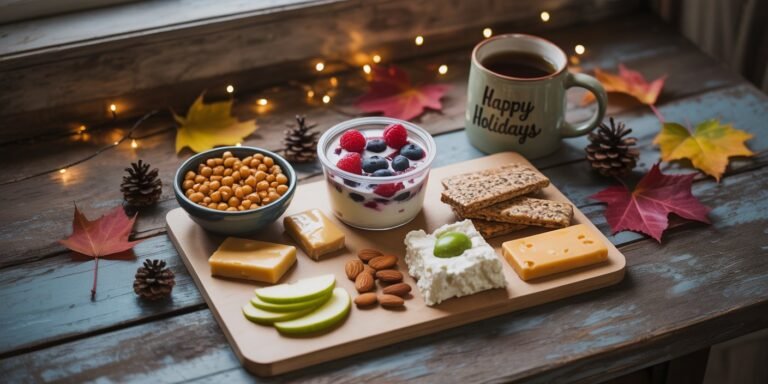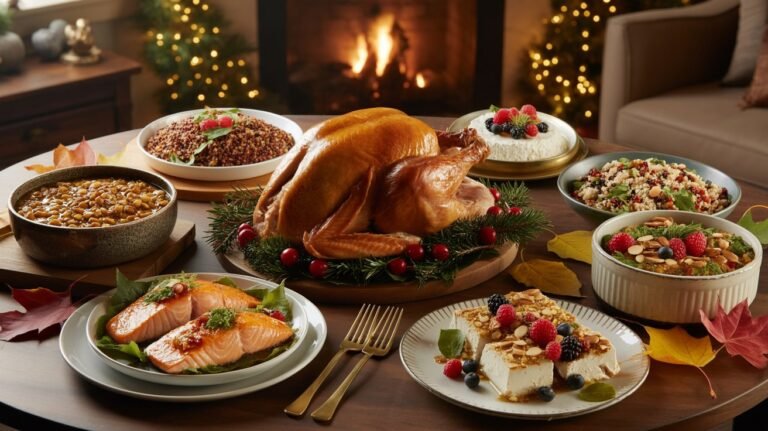Protein isn’t just for bodybuilders — it’s a vital nutrient that keeps you full, fuels your muscles, and supports overall health. Whether your goal is building strength, losing weight, or simply feeling more energized throughout the day, getting enough protein in your diet is key.
But not all protein sources are created equal, and knowing which foods pack the biggest punch can make a huge difference in your results.
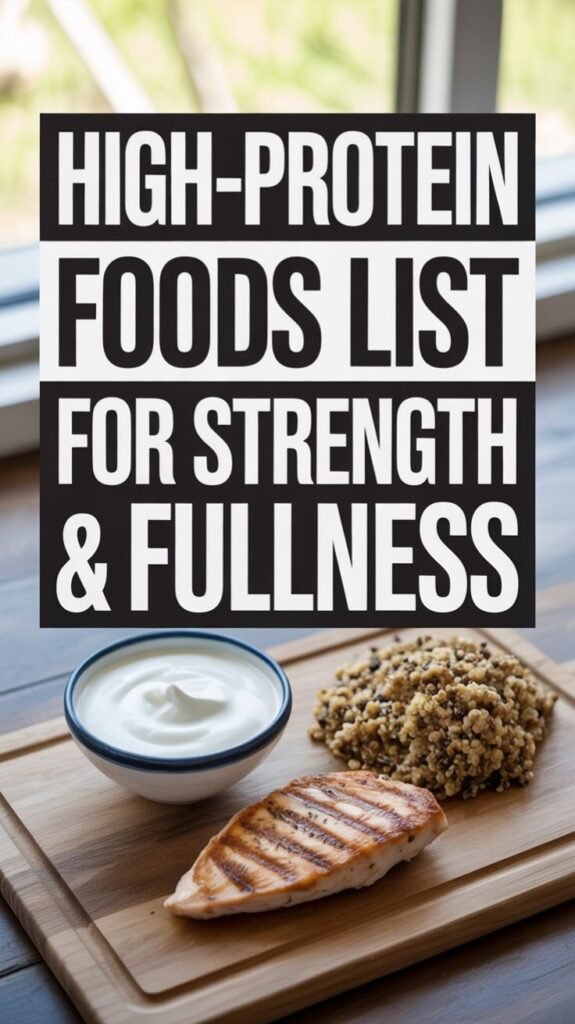
In this guide, we’re breaking down 10 high-protein foods that are easy to include in your meals and snacks. From animal-based powerhouses to plant-based options, each choice is packed with nutrients that promote satiety, help maintain muscle mass, and keep your metabolism humming.
No complicated recipes or obscure ingredients — just simple, effective foods you can enjoy every day. By the end, you’ll have a solid list of go-to protein sources to keep your body strong, satisfied, and ready to tackle your goals.
Just so you know: This post may contain affiliate links, meaning we may earn a small commission if you make a purchase — at no extra cost to you. We only recommend high-protein foods and nutrition products we truly believe can help boost your strength, support your goals, and keep you full and fueled.
Why Protein Matters
Protein is one of the most important macronutrients for weight loss, muscle maintenance, and overall health. Unlike carbs or fats, protein has unique properties that boost metabolism, promote fullness, and support lean muscle growth—all of which are key for achieving and maintaining a healthy weight.
Key Benefits of Protein:
- Promotes Satiety: Protein takes longer to digest than carbs, helping you feel full longer and reducing cravings and overeating.
- Supports Muscle Maintenance: During weight loss, protein helps preserve lean muscle mass, ensuring that most of the weight you lose comes from fat, not muscle.
- Boosts Metabolism: The body burns more calories digesting protein compared to carbs or fats, a process called the thermic effect of food.
- Supports Hormone Balance: Protein helps regulate hormones like ghrelin (hunger hormone) and leptin (satiety hormone), which control appetite naturally.
- Enhances Recovery & Strength: Protein is essential for repairing and building tissues, especially after exercise, making it a critical nutrient for those who work out regularly.
How to Include More Protein:
- Include a protein source in every meal, such as eggs, Greek yogurt, lean meats, tofu, or legumes.
- Snack on high-protein options like nuts, seeds, protein shakes, or cottage cheese.
- Pair protein with fiber-rich foods to improve fullness and stabilize blood sugar.
Pro Tip:
Incorporating adequate protein naturally supports weight loss, lean muscle, and overall health, making it a cornerstone of any balanced diet.
Aim for 20–30 grams of protein per meal to maximize satiety and muscle support.
Distribute protein intake throughout the day rather than consuming most of it in one meal for better absorption and metabolic benefits.
1. Chicken Breast
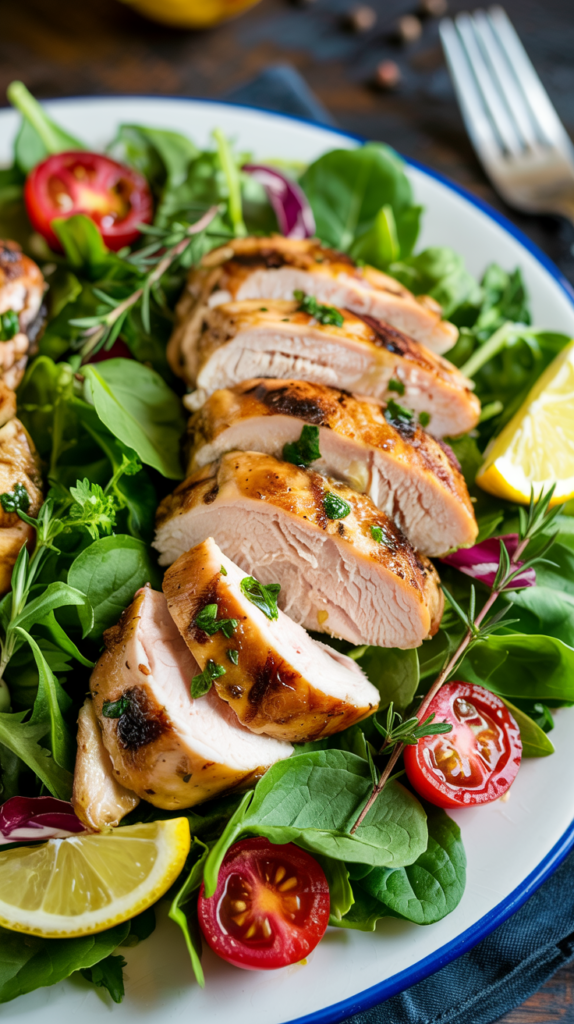
Chicken breast is a lean, protein-packed staple that’s perfect for anyone looking to lose weight, build muscle, and stay full longer.
It’s low in fat, high in protein, and incredibly versatile, making it one of the best natural protein sources for a healthy diet.
Why it Works:
- High Protein Content: Chicken breast is loaded with protein, which helps preserve lean muscle, boost metabolism, and curb hunger.
- Low in Fat: Skinless chicken breast is very low in fat, making it ideal for calorie-conscious meals while still providing satisfying nutrition.
- Supports Muscle Growth & Recovery: Protein from chicken breast provides essential amino acids necessary for muscle repair and recovery after workouts.
- Versatile & Easy to Cook: Can be grilled, baked, sautéed, or poached, making it easy to include in a variety of dishes without added calories.
How to Use It:
- Grilled or Baked: Season with herbs, spices, or lemon for a quick, healthy protein source.
- Salads & Bowls: Add sliced chicken breast to salads, grain bowls, or roasted veggies for a balanced meal.
- Wraps & Sandwiches: Use as a filling in whole-grain wraps or sandwiches for a portable, protein-rich option.
- Meal Prep: Cook in bulk and store for easy meals throughout the week.
Pro Tip:
Including chicken breast regularly can help you meet daily protein requirements, support fat loss, and maintain lean muscle naturally.
Opt for skinless chicken breast to keep calories and fat low.
Pair with fiber-rich vegetables and whole grains to make a complete, filling meal.
How to use it: Grill and slice for meal prep bowls, dice into stir-fries, or bake with herbs for a quick dinner. Combine with veggies and complex carbs like quinoa or brown rice.
Pro Tip: For flavor without extra fat, marinate with lemon juice, garlic, and herbs.
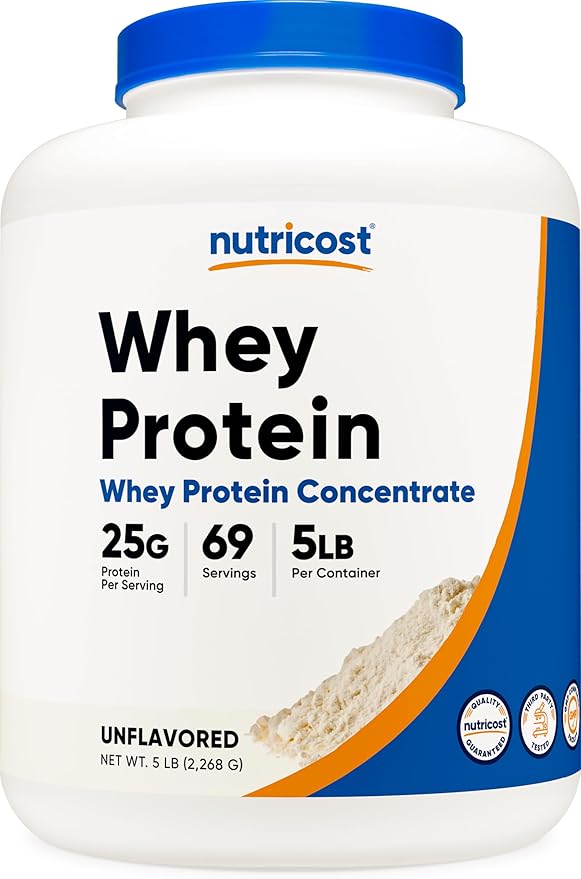
Nutricost Whey Protein Powder, Unflavored, 5 pounds – from Whey Protein Concentrate
2. Eggs

Eggs are one of the most versatile and nutrient-dense protein sources available, making them perfect for natural weight loss and overall health. Packed with high-quality protein, healthy fats, and essential vitamins and minerals, eggs help you feel full, maintain muscle, and support metabolic health.
Why it Works:
- High in Protein: One large egg contains about 6–7 grams of protein, which helps with satiety, muscle maintenance, and fat loss.
- Supports Metabolism: Eggs contain essential nutrients like B vitamins and choline, which play a role in energy production and metabolism.
- Low in Calories: Despite being nutrient-rich, eggs are relatively low in calories, making them ideal for weight management.
- Versatile and Quick to Cook: Eggs can be prepared in numerous ways—boiled, scrambled, poached, or baked—making them perfect for busy mornings or quick meals.
How to Use Them:
- Breakfast: Scrambled with vegetables, an omelet, or boiled as a quick snack.
- Lunch/Dinner: Add chopped boiled eggs to salads or grain bowls for extra protein.
- Snacks: Hard-boiled eggs are convenient, portable, and keep you full between meals.
- Cooking Tip: Pair eggs with high-fiber foods like vegetables or whole-grain toast to boost satiety and blood sugar control.
Pro Tip:
Including eggs in at least one meal a day can help you stay full longer, reduce cravings, and naturally support weight loss goals.
Opt for pasture-raised or free-range eggs when possible for higher nutrient quality.
3. Greek Yogurt

Greek yogurt is a protein-rich, creamy dairy option that’s perfect for weight loss, muscle maintenance, and overall health. Unlike regular yogurt, Greek yogurt is strained, giving it a thicker texture and higher protein content, which helps you feel full and satisfied.
Why it Works:
- High in Protein: Greek yogurt contains about 15–20 grams of protein per serving, supporting satiety, muscle repair, and fat loss.
- Low in Sugar (if plain): Opting for plain Greek yogurt keeps calories low and avoids added sugars that can spike blood sugar.
- Supports Gut Health: Rich in probiotics, Greek yogurt promotes healthy digestion and gut flora, which can indirectly support metabolism and weight management.
- Versatile & Convenient: Can be eaten alone, with toppings, or incorporated into meals and snacks.
How to Use It:
- Breakfast: Mix with berries, chia seeds, and a drizzle of honey for a balanced, protein-packed start to your day.
- Snacks: Pair with nuts or fruit for a filling afternoon snack.
- Smoothies: Blend Greek yogurt into smoothies for creaminess and added protein.
- Cooking & Baking: Use as a base for sauces, dips, or even baked goods to increase protein content.
Pro Tip:
Including Greek yogurt regularly can help you stay full, meet protein goals, and support sustainable weight loss while enjoying a delicious and versatile food.
Choose plain, unsweetened Greek yogurt to control sugar and calorie intake.
Combine with fiber-rich toppings like fruit, seeds, or oats to enhance fullness.
Try this: Make a high-protein parfait layered with oats, berries, and a sprinkle of chia seeds for an easy breakfast.
4. Lentils
Fuel up with protein-packed lentils—plant-based power for lean muscle, digestion, and energy!

Lentils are a nutrient-dense, plant-based protein that’s perfect for supporting weight loss, maintaining muscle, and keeping you full between meals. Packed with protein, fiber, and essential minerals, lentils are versatile, affordable, and easy to incorporate into a variety of dishes.
Why it Works:
- High in Protein: Lentils are a plant-based protein source that helps build and preserve lean muscle, promote satiety, and support fat loss.
- Rich in Fiber: The high fiber content slows digestion, stabilizes blood sugar, and keeps you feeling full longer.
- Low in Fat: Lentils are naturally low in fat, making them ideal for calorie-conscious meals.
- Supports Heart Health: Packed with folate, iron, and potassium, lentils help reduce cholesterol and support overall cardiovascular health.
How to Use Them:
- Soups and Stews: Add lentils to vegetable soups or stews for a filling, protein-rich meal.
- Salads: Toss cooked lentils with leafy greens, roasted vegetables, and a light vinaigrette.
- Curries and Dals: Use lentils as the base for hearty, flavorful Indian or Mediterranean-inspired dishes.
- Burgers & Patties: Mash cooked lentils with spices and oats to make vegetarian patties.
Pro Tip:
Including lentils regularly can help you meet daily protein needs, stay fuller longer, and support sustainable weight loss naturally
Combine lentils with whole grains like rice or quinoa to create a complete protein.
Cook in bulk and store in the fridge for quick meal prep throughout the week.
Recipe idea: Lentil curry or lentil tacos with avocado and fresh salsa. Store leftovers for up to five days in the fridge.
5. Cottage Cheese

Cottage cheese is a high-protein, low-fat dairy option that’s perfect for supporting weight loss, muscle maintenance, and overall nutrition. Rich in casein protein, calcium, and essential vitamins, it provides slow-digesting protein that keeps you full for longer periods.
Why it Works:
- High in Protein: Cottage cheese is packed with casein protein, which releases slowly and helps maintain satiety, reduce cravings, and support muscle repair.
- Low in Calories and Fat: Many varieties are low in fat and calories, making cottage cheese ideal for weight management.
- Supports Bone Health: It contains calcium and phosphorus, essential minerals that strengthen bones.
- Versatile and Easy to Use: Cottage cheese can be eaten on its own, mixed with fruits, or incorporated into recipes for a protein boost.
How to Use It:
- Breakfast: Top with fresh berries, chia seeds, or a drizzle of honey for a nutrient-dense start to the day.
- Snacks: Pair with sliced cucumber, tomatoes, or whole-grain crackers for a filling mid-day snack.
- Meals: Add to salads, wraps, or baked dishes to increase protein content.
- Desserts: Mix with cocoa powder or cinnamon for a sweet, healthy treat.
Pro Tip:
Including cottage cheese regularly can help you meet daily protein goals, curb hunger, and maintain lean muscle during weight loss.
Choose low-fat or non-fat varieties if you’re watching calorie intake.
Combine with fiber-rich foods like fruits, vegetables, or oats to enhance fullness and support digestion.
Flavor idea: Blend with Greek yogurt and a splash of vanilla extract for a creamy dessert alternative.
Build lean muscle, boost recovery, and keep it clean — fuel up with Nutricost Whey Protein Powder today!”
6. Tuna
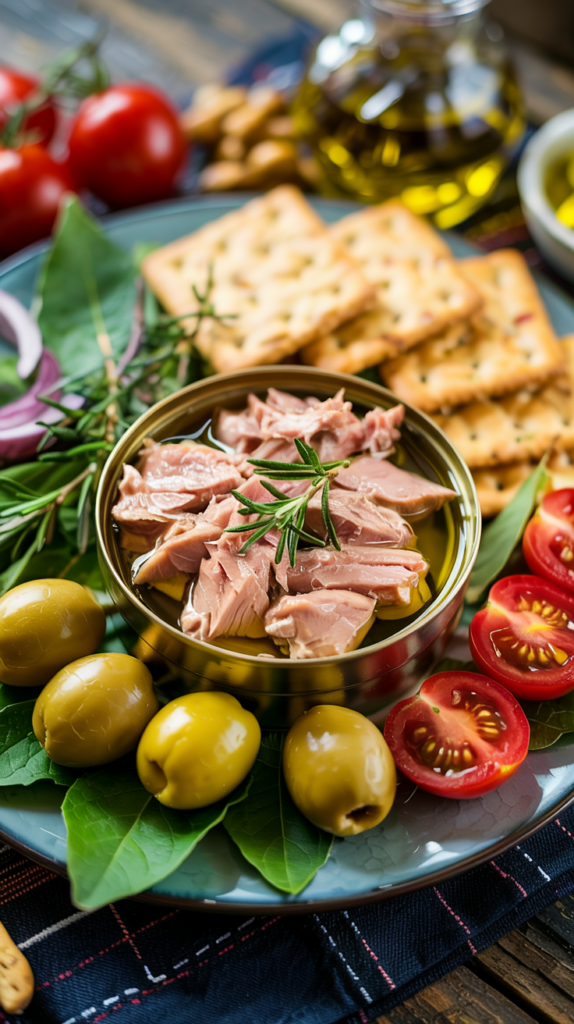
Tuna is a lean, protein-packed fish that’s perfect for supporting natural weight loss, muscle maintenance, and overall health. Rich in high-quality protein, omega-3 fatty acids, and essential nutrients, tuna is versatile, convenient, and easy to incorporate into meals.
Why it Works:
- High Protein Content: Tuna provides a complete protein source, which helps build and maintain lean muscle, promotes satiety, and supports fat loss.
- Low in Calories and Fat: Tuna is naturally low in calories and saturated fat, making it ideal for those managing their weight.
- Supports Heart Health: Omega-3 fatty acids in tuna help reduce inflammation and improve cardiovascular health.
- Boosts Metabolism: Adequate protein intake from tuna supports energy expenditure and helps maintain a healthy metabolism.
How to Use It:
- Salads: Mix canned or fresh tuna with greens, vegetables, and a light dressing for a balanced, protein-rich meal.
- Sandwiches or Wraps: Combine tuna with avocado or Greek yogurt instead of mayonnaise for a healthier filling.
- Grilled or Baked: Fresh tuna steaks can be grilled or baked with herbs, lemon, and spices.
- Tuna Bowls: Pair with whole grains, roasted vegetables, and a drizzle of olive oil for a satisfying meal.
Pro Tip:
Incorporating tuna regularly can help you meet protein goals, support fat loss, and maintain lean muscle in a convenient, delicious way.
Choose wild-caught tuna or light tuna for lower mercury levels and better nutrient quality.
Pair tuna with fiber-rich foods like leafy greens, beans, or whole grains to improve digestion and fullness.
Meal prep tip: Add canned tuna to salads, stuff into whole-wheat pita pockets, or mix with avocado instead of mayo for a lighter tuna salad.
Warning: Limit canned tuna intake (especially albacore) due to mercury content—1–2 servings per week is considered safe.
7. Tofu
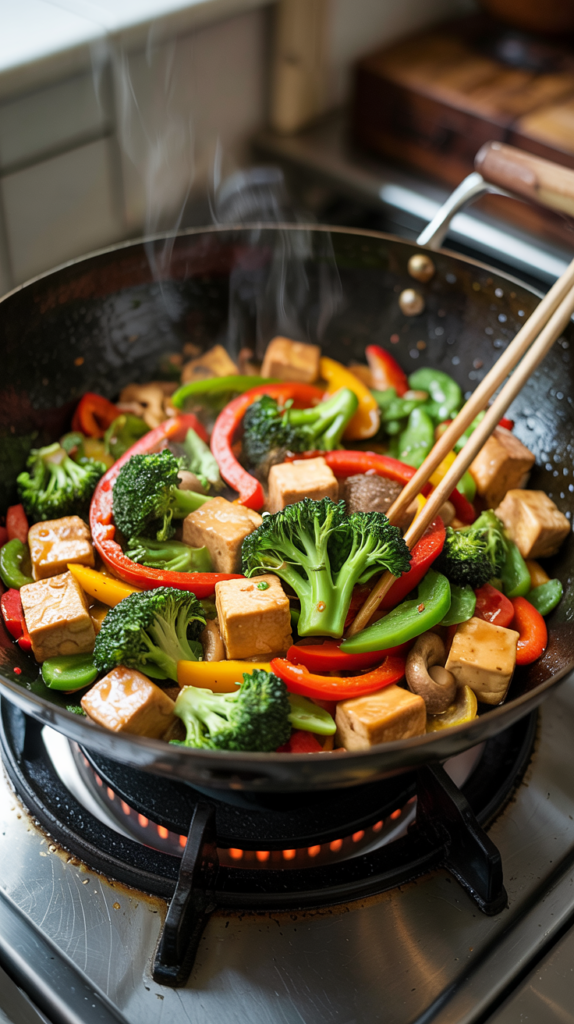
Tofu is a versatile, protein-packed plant-based food that’s perfect for anyone looking to boost protein intake while keeping meals healthy and satisfying. Made from soybeans, tofu is rich in high-quality protein, iron, calcium, and other essential nutrients, making it a staple for vegetarian and vegan diets.
Why it Works:
- High Protein Content: Tofu provides a complete source of protein, containing all nine essential amino acids, which helps with muscle maintenance, satiety, and fat loss.
- Low in Calories: Despite being nutrient-dense, tofu is relatively low in calories, making it ideal for weight management.
- Versatile in Cooking: Tofu absorbs flavors well and can be used in a variety of dishes—from stir-fries and soups to smoothies and baked meals.
- Supports Heart Health: Soy protein in tofu can help reduce cholesterol levels and promote cardiovascular health.
How to Use It:
- Firm Tofu: Best for grilling, baking, or stir-frying.
- Silken Tofu: Ideal for smoothies, creamy sauces, or desserts.
- Marinate: Soak tofu in soy sauce, herbs, or spices to enhance flavor before cooking.
- Pair with Veggies & Grains: Combine with colorful vegetables and whole grains for a balanced, protein-rich meal.
Pro Tip:
Incorporating tofu regularly into meals helps you meet daily protein needs naturally, supporting muscle growth, satiety, and a healthier metabolism.
Press firm tofu before cooking to remove excess water, which improves texture and allows it to crisp up better.
Experiment with different cooking methods like pan-frying, baking, or air-frying to find your favorite preparation.
8. Protein Powders

Fast and easy protein fix (20–30g per scoop)
Protein powders are a convenient and versatile way to increase your protein intake, especially for busy lifestyles or those who struggle to meet their daily protein needs through whole foods alone.
Available in whey, casein, soy, pea, and other plant-based options, protein powders can support muscle growth, fat loss, and overall health.
Why it Works:
- Quick Protein Boost: Protein powders provide a concentrated source of protein in just one scoop, helping you hit your daily protein goals easily.
- Supports Muscle Maintenance: Consuming protein after workouts helps repair and build lean muscle, which is essential for boosting metabolism and fat burning.
- Aids Weight Management: Protein promotes satiety, helping reduce cravings and unnecessary snacking throughout the day.
- Versatile & Easy to Use: Protein powders can be incorporated into shakes, smoothies, oatmeal, baked goods, or even pancakes.
How to Use It:
- Post-Workout Shakes: Blend with almond milk, frozen berries, and a banana for a quick recovery snack.
- Meal Boosters: Add a scoop to oatmeal, yogurt, or smoothie bowls for extra protein.
- Baking: Replace part of the flour in recipes like pancakes, muffins, or energy bars with protein powder.
- Plant-Based Options: Choose pea, hemp, or soy protein if you prefer a vegan-friendly option.
Pro Tip:
Using protein powders strategically can help you meet daily protein needs, support muscle growth, and aid in sustainable fat loss, making it a valuable tool for both beginners and seasoned fitness enthusiasts.
Check the label for added sugars or fillers—opt for powders with minimal ingredients.
Combine protein powder with fiber and healthy fats for a balanced, filling snack.
When to use: Ideal post-workout or when you’re short on time.
Whey is fast-digesting; casein is slow; plant-based is hypoallergenic and suitable for vegans.
Shake recipe: 1 scoop protein + 1 banana + 1 tbsp peanut butter + almond milk = 30g+ of protein in minutes.

“Fuel your muscles the clean way! Grab Nutricost Whey Protein Powder today and power up your workouts with pure, unflavored protein.”
9. Quinoa

Quinoa is a nutrient-dense, gluten-free grain that’s packed with complete plant-based protein, making it a fantastic option for anyone looking to boost protein intake while maintaining a healthy diet. It’s also rich in fiber, vitamins, and minerals, supporting satiety, digestion, and overall health.
Why it Works:
- Complete Protein: Unlike most grains, quinoa contains all nine essential amino acids, helping build and maintain lean muscle and keep you full longer.
- High in Fiber: Fiber slows digestion, stabilizes blood sugar, and supports weight management and gut health.
- Low Glycemic Index: Quinoa releases energy slowly, which helps prevent blood sugar spikes and mid-meal cravings.
- Rich in Nutrients: Provides magnesium, iron, manganese, and B vitamins, which support energy production and overall wellness.
How to Use It:
- Salads & Bowls: Toss cooked quinoa with vegetables, beans, or tofu for a balanced, protein-rich meal.
- Breakfast: Use quinoa as a base for a warm breakfast porridge with nuts, seeds, and fruit.
- Side Dish: Serve as a healthy substitute for rice or pasta with your favorite proteins and veggies.
- Stuffed Vegetables: Combine quinoa with beans, spices, and veggies to stuff peppers, zucchini, or tomatoes.
Pro Tip:
Incorporating quinoa into your meals regularly can help you meet protein needs, stay fuller longer, and support sustainable weight loss naturally.
Rinse quinoa before cooking to remove natural bitterness (saponins).
Cook in vegetable or chicken broth to add extra flavor without extra calories.
“No sugar, no fillers, just results. Get your 5lb tub of Nutricost Whey Protein Powder and take your fitness to the next level!”
10. Salmon
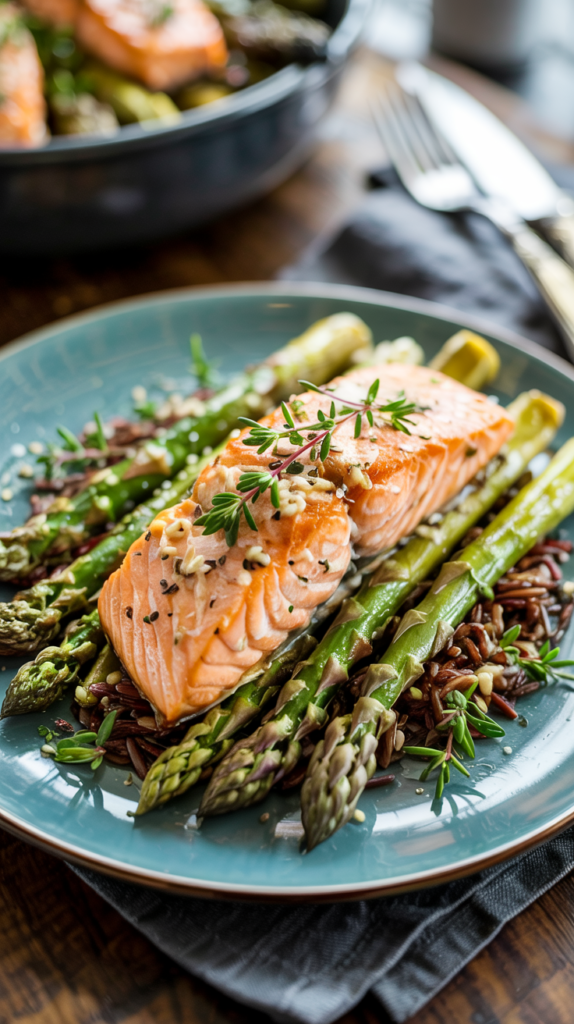
Salmon is a nutrient-dense, protein-rich fish that’s ideal for supporting weight loss, muscle maintenance, and overall health. Packed with high-quality protein, omega-3 fatty acids, and essential vitamins, salmon offers a wide range of benefits for both your body and metabolism.
Why it Works:
- High-Quality Protein: Salmon provides complete protein, which helps build and preserve lean muscle, supports satiety, and aids in fat loss.
- Rich in Omega-3s: The healthy fats in salmon reduce inflammation, support heart health, and may improve metabolic efficiency.
- Nutrient Dense: Salmon is loaded with vitamins B12, D, and selenium, which help with energy production, immunity, and overall wellness.
- Supports Weight Management: Combining protein and healthy fats promotes fullness, helping you avoid overeating and unnecessary snacking.
How to Use It:
- Grilled or Baked: Season with herbs, lemon, or spices and bake or grill for a simple, flavorful meal.
- Pan-Seared: Cook salmon in a skillet with a touch of olive oil for a crispy exterior.
- Salads & Bowls: Flake cooked salmon over salads, grain bowls, or roasted vegetables for a balanced, protein-packed meal.
- Smoked Salmon: Add to whole-grain toast or wraps for a quick, nutritious breakfast or snack.
Pro Tip:
Regularly including salmon in your diet can help boost metabolism, maintain muscle, and support sustainable fat loss, all while providing delicious, versatile meals.
Choose wild-caught salmon when possible for higher omega-3 content and better nutrient quality.
Pair salmon with fiber-rich vegetables or whole grains to balance the meal and improve digestion.
How to Build a High-Protein Meal Plan
✔️ Aim for 20–40g protein per meal depending on your goals
✔️ Combine lean proteins with healthy fats and complex carbs
✔️ Add fiber-rich vegetables to support digestion and satiety
Example day:
- Breakfast: Eggs + oats + berries
- Snack: Greek yogurt + almonds
- Lunch: Chicken + quinoa salad
- Snack: Protein shake + banana
- Dinner: Salmon + veggies + sweet potato
FAQs – Your High-Protein Questions Answered
Q1: How much protein do I need daily?
Most active adults need 0.8–1.2 grams per pound of body weight. Adjust based on your goals and training level.
Q2: Can I lose weight with a high-protein diet?
Yes! Protein helps preserve lean muscle while reducing appetite, making it easier to burn fat.
Q3: Are plant-based protein sources effective?
Absolutely. Foods like tofu, lentils, and quinoa are excellent sources, especially when combined in balanced meals.
Q4: When is the best time to eat protein?
Spread intake throughout the day: with every meal and post-workout for optimal muscle recovery.
Q5: Is too much protein bad for the kidneys?
In healthy individuals, high-protein diets are safe. If you have kidney issues, consult your doctor first.
Q6: What’s the difference between complete and incomplete proteins?
Complete proteins have all 9 essential amino acids (e.g., eggs, meat, quinoa). Incomplete proteins may lack one or more (e.g., rice, beans), but can be combined to form complete meals.



